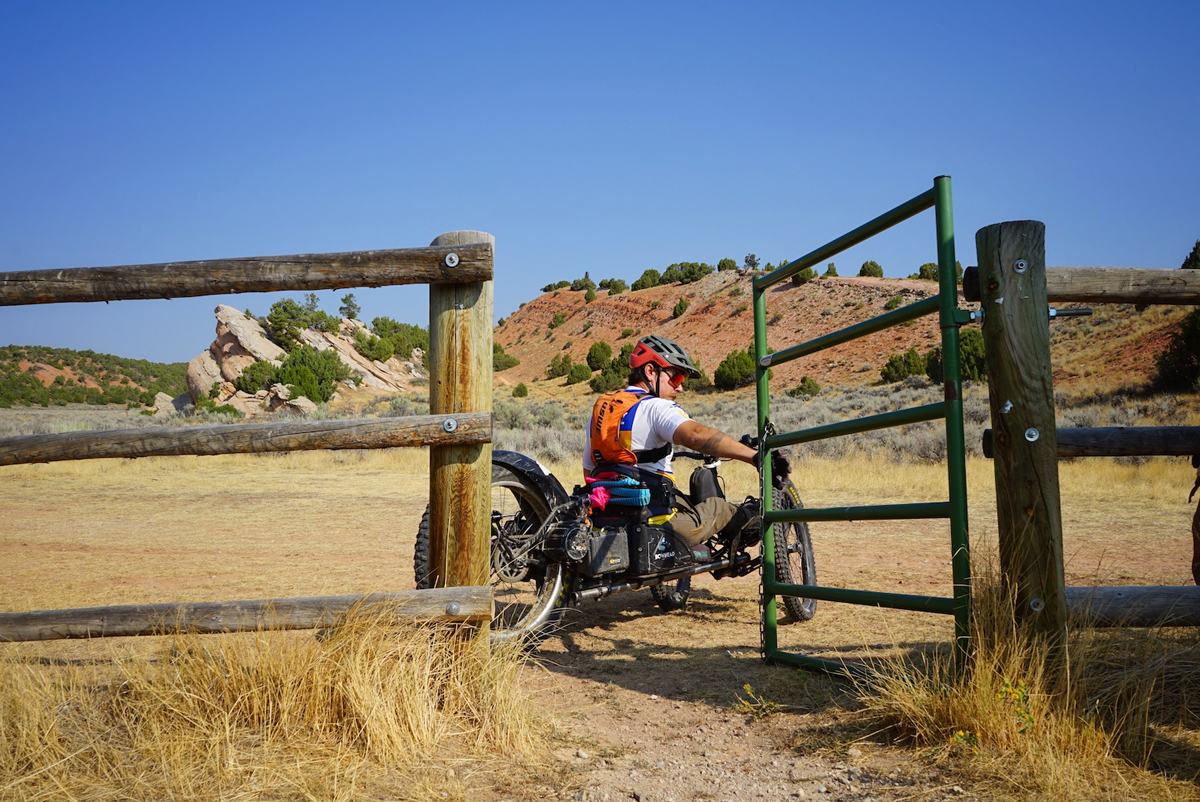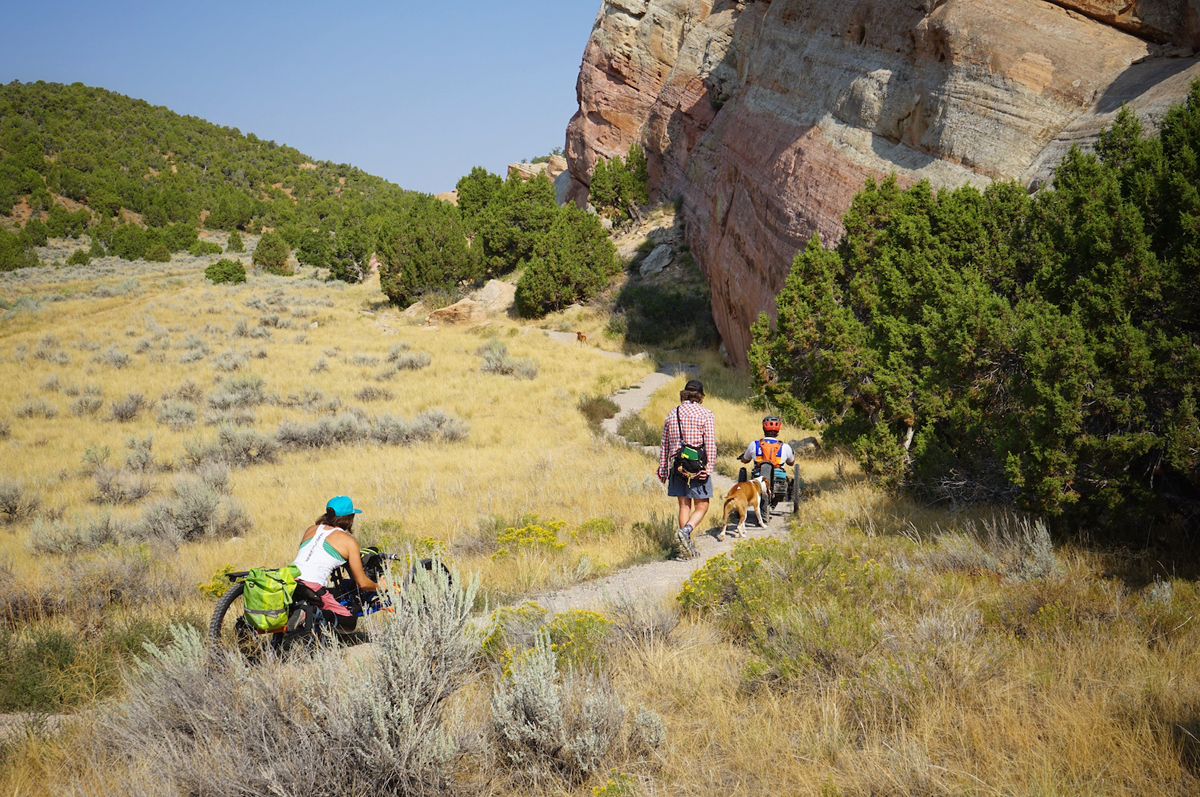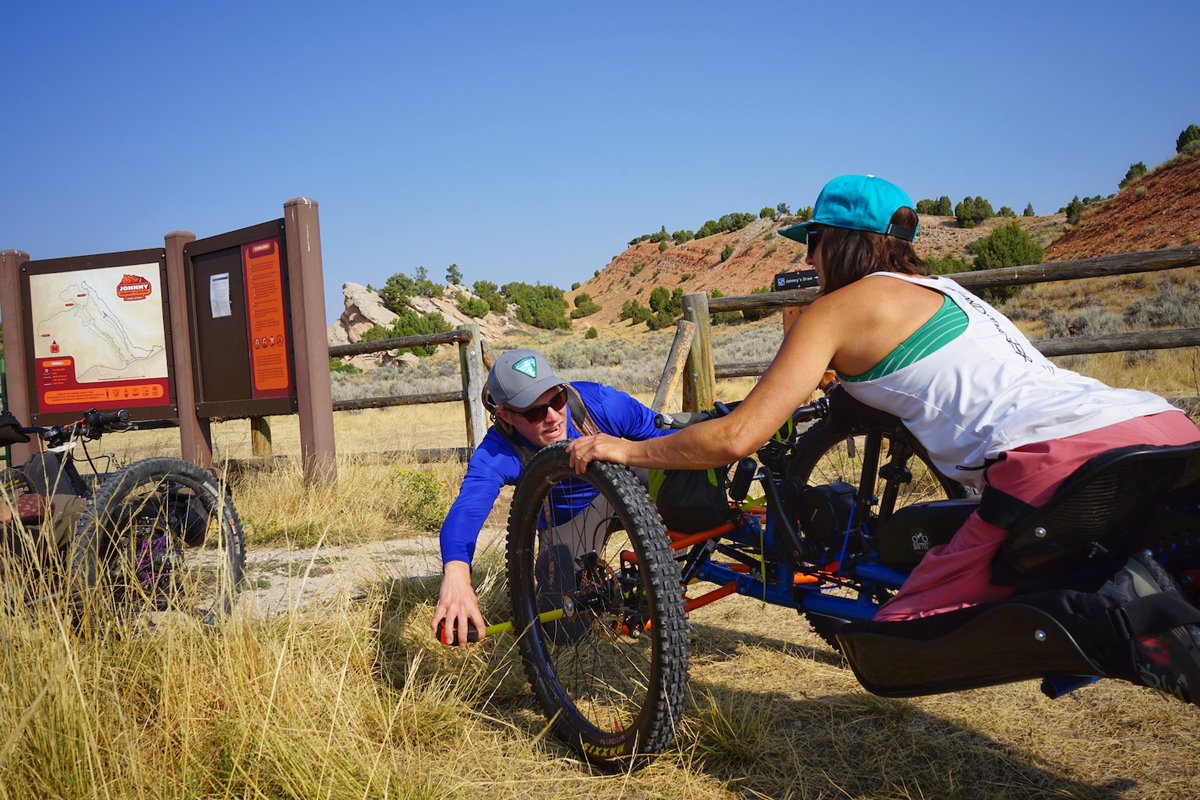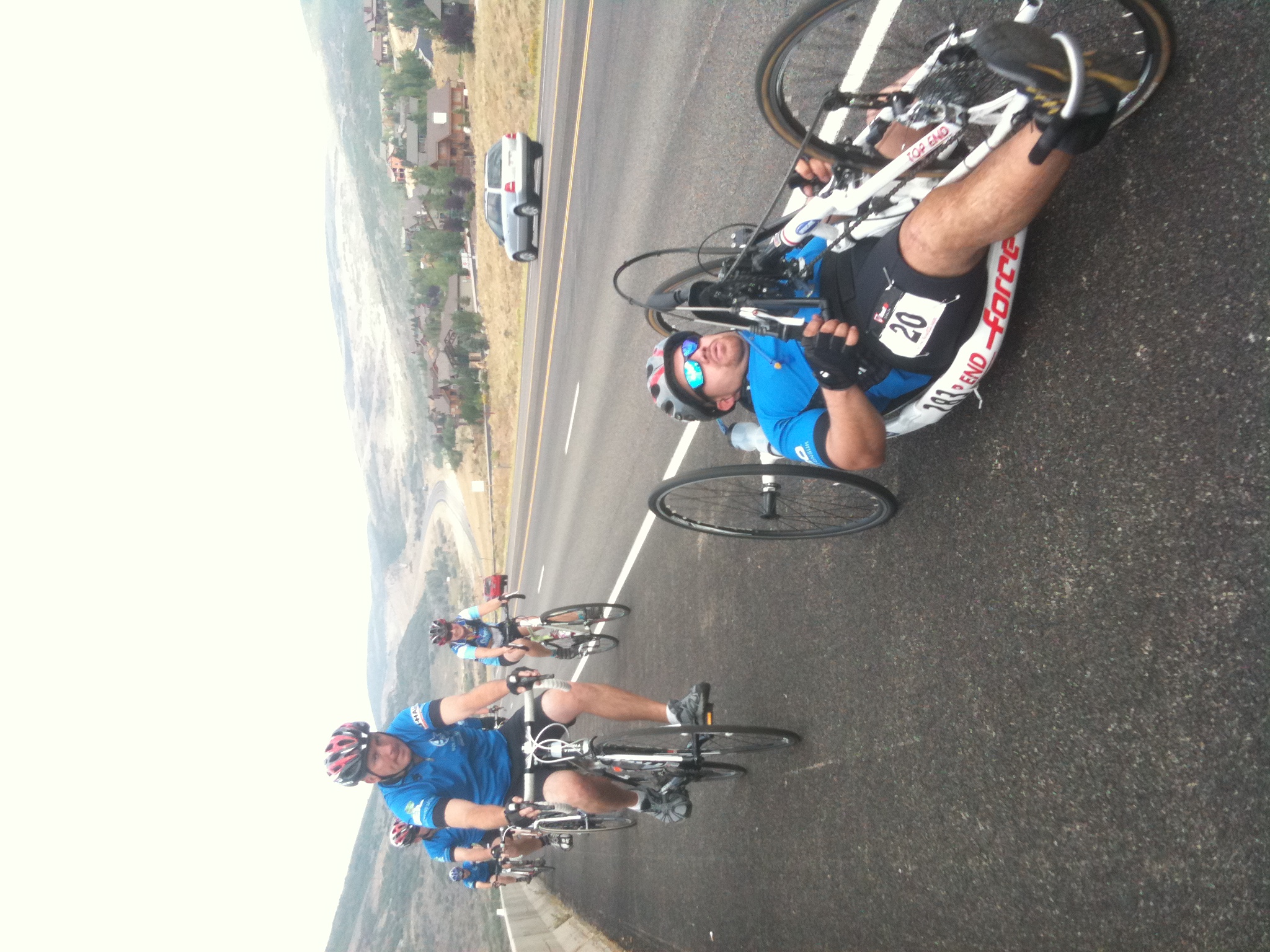By Katie Klingsporn, Wyofile.com — At BLM area near Lander, disabled athletes illustrate to land managers and trail builders how they can better accommodate adaptive outdoor recreation needs.
FREMONT COUNTY, Wyoming (September 6, 2024) — Joe Stone struggled momentarily with the chain latch as he closed the gate behind him. He held his hands up, and a time-keeper called out how long it took him to open, traverse and re-secure the swinging pipe fixture.
“Forty-seven seconds,” Stone repeated. “That is actually pretty good. The last one we did, it took me like five minutes.”
This gate at the entrance of a Bureau of Land Management trail system south of Lander likely wouldn’t give pause to an able-bodied recreator. But for an adaptive athlete like Stone, who is paralyzed from the chest down and rides a heavy three-wheel adaptive mountain bike, the task of passing through a gate can seriously disrupt an outing.

This is exactly the type of challenge that Stone and his business partner Quinn Brett set out to illustrate to a crew of trail builders, outdoor advocates and BLM staffers on a hazy late-August day at Johnny Behind the Rocks — a popular biking and hiking destination near Lander.
During a day-long clinic, the two disabled athletes took to the trails to show their students how trail design considerations like turning radius, trail width, rocks and gates can make a huge difference in accessibility.
The clinic helped give trail managers the understanding they need to build or modify the state’s trails to universal standards, which are intended for people with a variety of mobility levels, Wyoming Pathways Executive Director Mike Kusiek said. His group put on the clinic with the BLM.

Before they started a trail consulting company together, Brett and Stone had much in parallel. Brett is a former professional climber and national park climbing ranger. In 2017 she took a 100-foot fall in Yosemite National Park and broke her back. The injury left her paralyzed from the pelvis down.
“My world flipped upside down,” she said, “from going wherever you wanted, whenever you wanted, to this world of accessibility where, ‘wow, it’s hard to go anywhere.’”
Stone was a self-proclaimed “smile-chaser” whose pursuits included skiing, mountain biking and skydiving. He was speed-flying in Montana in 2010 when he crashed his paragliding wing into the side of a mountain. A spinal cord injury also left him paralyzed, but unlike Brett, Stone has no function in his abdominal muscles.
Like Brett, however, Stone set out on a path “to be able to get me back to the lifestyle I was living before, which was away from the pavement and getting further into the mountains or further into the desert.”

They discovered an exciting array of equipment and advancements enabling adaptive athletes to explore and play. “But our trails aren’t quite there yet,” Stone said. That’s where Dovetail Trail Consulting comes in.
“That’s really the big picture of what we’re trying to do,” Stone told the participants. “We’re not telling you to dumb down the trails, to simplify them, sanitize them or anything like that. Keep them what the original intent is. But with a few tweaks here and there, they also then can work for people with mobility disabilities.”
WyoFile is an independent nonprofit news organization focused on Wyoming people, places and policy.








